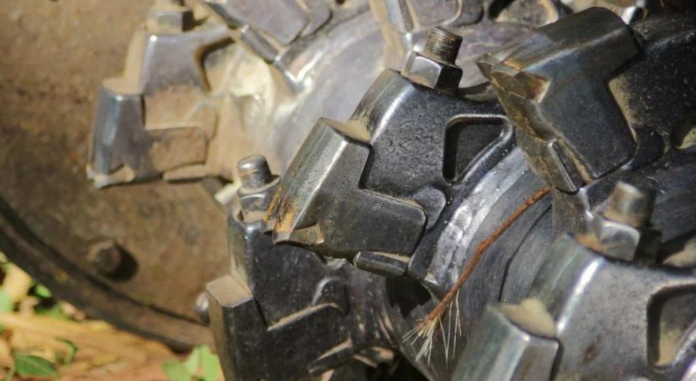Carbide teeth have revolutionized the performance and effectiveness of forestry mulchers, playing an important role in current land-clearing operations. These current additives are made from tungsten carbide, famed for its superb hardness and sturdiness. Not like conventional metal teeth, carbide teeth hold sharpness over extended intervals, withstanding the abrasive situations of forestry environments.
This longevity reduces downtime for protection and alternatives, optimizing operational efficiency and cost-effectiveness. Forestry mulchers with carbide teeth showcase superior reducing performance, hastily processing dense plant life, trees, and woody particles. The precision-engineered profiles of carbide teeth ensure consistent and efficient mulching, which is essential for assembly mission timelines and reducing overall costs.
As a result, forestry agencies and contractors increasingly prioritize carbide teeth for their sturdiness, performance, and long-term economic benefits. Within the dynamic panorama of land clearing, carbide teeth for forestry mulcher stand as a testament to innovation, improving productivity while minimizing environmental effects.
Strategies to Mitigate the Common Issues of Carbide Teeth
Mitigating common issues with carbide teeth in forestry mulchers involves proactive renovation, proper operation practices, and deciding on the right form of carbide teeth for precise applications. Here’s an in-depth article on how to address and mitigate these issues correctly:
Regular Inspection and Maintenance
Everyday inspection and renovation are vital for optimizing carbide tooth performance in forestry mulchers. Check out teeth and holders often for wear and damage, and change tired parts directly. Make certain bolts and nuts are tightened securely to maintain tooth holder integrity. Screen tooth sharpness and update dull teeth directly to sustain reduced performance. These practices minimize downtime, expand tooth lifespans, and enhance mulching effectiveness in hard forestry environments.
Proper Operation Practices
Proper operation practices are critical to maximizing carbide tooth effectiveness in forestry mulchers. Maintain the finest feeding speeds to prevent excessive wear. Clear the workplace of rocks and difficult debris to keep away from tooth harm. Use accurate cutting techniques and keep away from overloading the mulcher to decrease pressure at the tooth. These practices ensure efficient mulching operations, lessen downtime for renovation and lengthen the lifespan of carbide teeth in traumatic forestry situations.
Choose the Right Carbide Teeth
Deciding on the proper carbide teeth is crucial for optimizing overall performance in forestry mulchers. Select teeth with appropriate designs suited for the particular mulching task and material types encountered. Take into account the hardness and durability of the carbide grade to fit the intensity of the software. Right selection guarantees teeth can stand up to abrasive conditions and keep sharpness longer, reducing replacement frequency and enhancing average mulching efficiency and productivity.
Implement Preventive Measures
Implementing preventive measures is fundamental to extending the lifespan of carbide teeth in forestry mulchers. Set up wearable plates and guards to guard inclined areas from harm. Make use of lubrication systems to lessen friction and put on between teeth and materials. Regularly look into and preserve the system to come across issues early. By taking proactive steps to limit put on and damage, inclusive of those measures, operators can boost the reliability and performance of their mulching operations while lowering ordinary preservation costs.
Training and Awareness
Education of operators on the right mulcher operation and preservation practices is critical for mitigating common issues and enhancing the performance of carbide teeth. Teach operators techniques to decrease put on and optimize performance. Foster focuses on terrain conditions and material types to modify operations accordingly. By improving operator competencies and consciousness, operators can contribute to reducing downtime, extending tooth lifespan, and improving average productivity in forestry mulching programs.
Conclusion
With the aid of implementing these strategies, forestry mulcher operators can correctly mitigate common problems associated with carbide teeth. Proactive renovation, proper operation practices, deciding on the proper tooth, and ongoing education contribute to maximizing the efficiency and lifespan of carbide teeth in forestry mulchers. This method now not only reduces downtime and protection charges but also enhances general productivity and operational fulfillment in land clearing and forestry applications.










